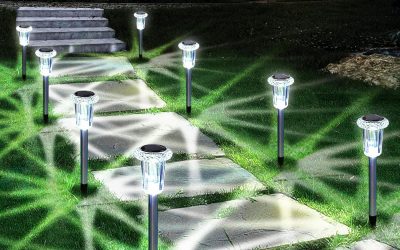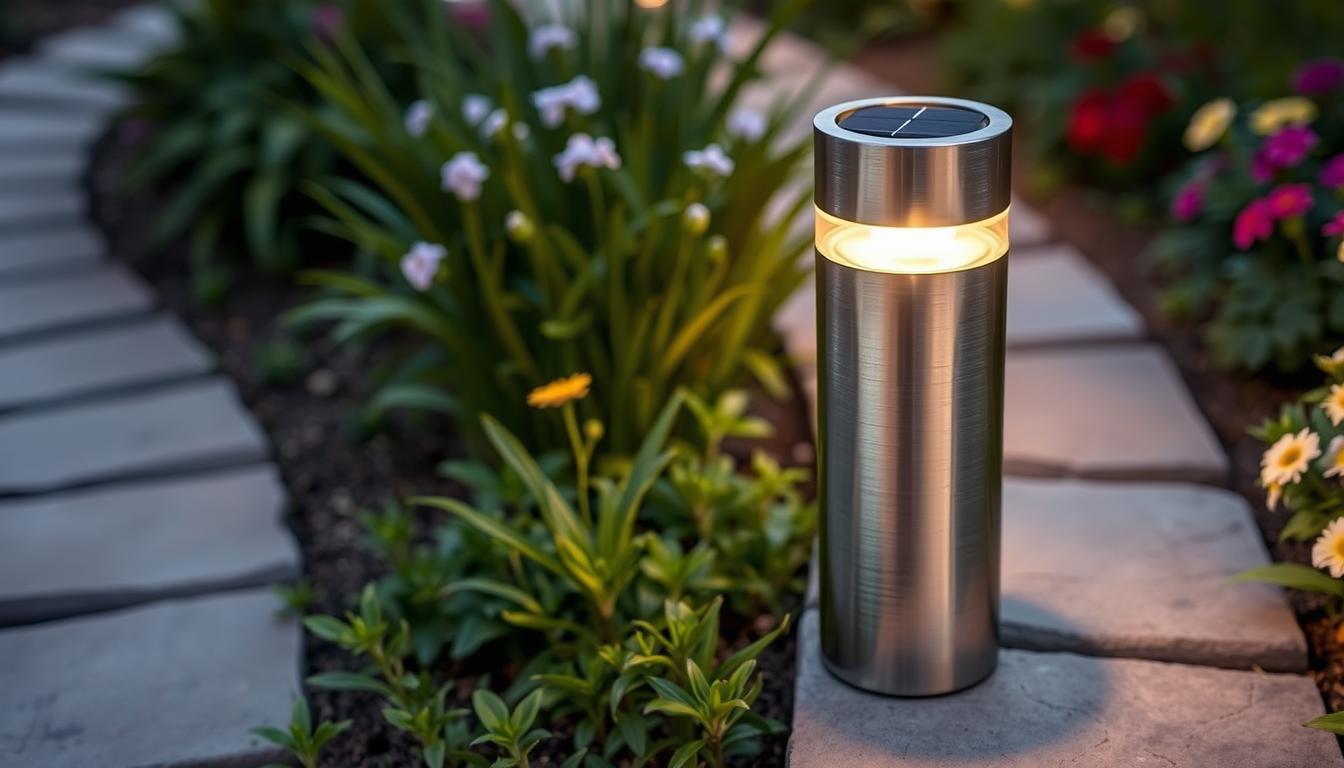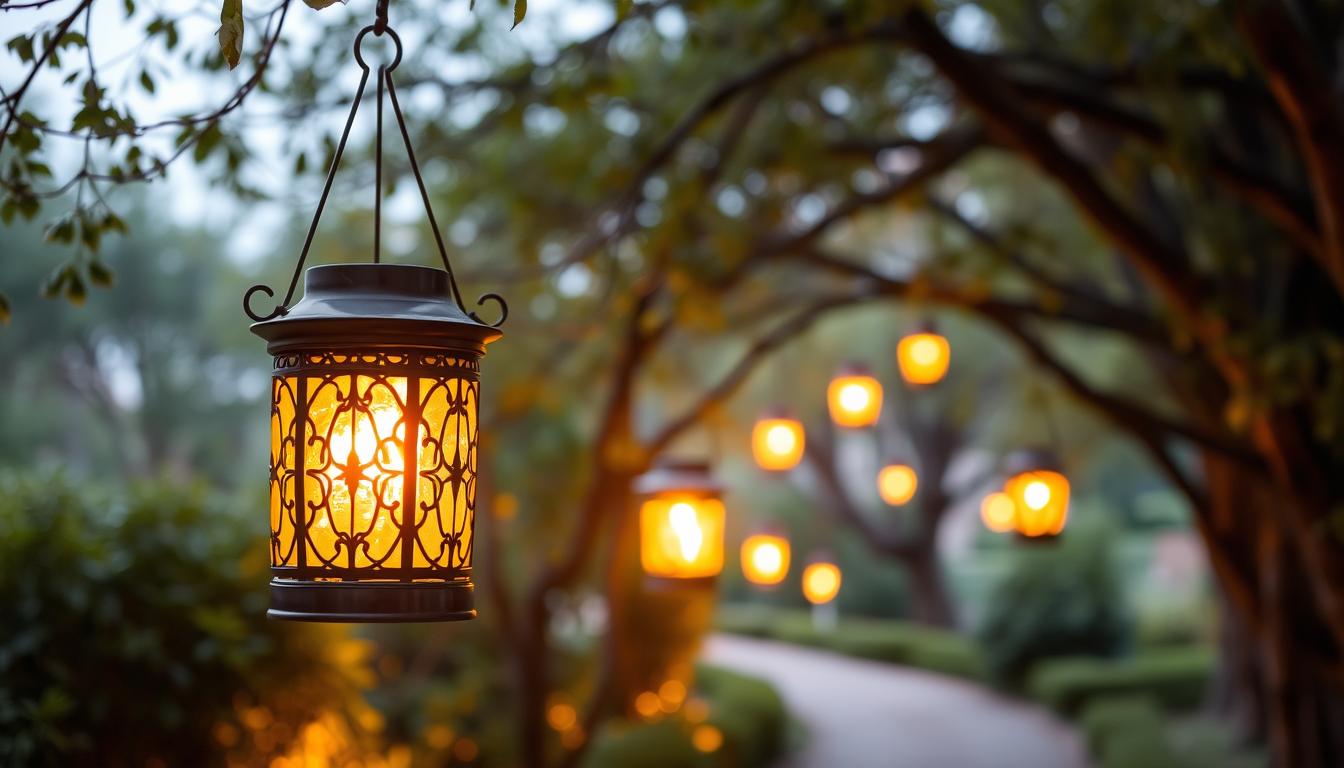Are you curious about the durability of solar walkway lights? Have you ever wondered how long they can actually last? Well, you’ve come to the right place! In this article, we’ll unveil the secrets behind the lifespan of these eco-friendly outdoor lights. So, sit back, relax, and get ready to shed some light on the longevity of solar walkway lights.

Factors Affecting the Lifespan of Solar Walkway Lights
When it comes to the lifespan of solar walkway lights, there are several factors that can have an impact. Understanding these factors will help you make an informed decision when selecting and maintaining your solar walkway lights. Here, we will take a closer look at some of the key factors that can affect the lifespan of these lights.
Quality of the Lights
The quality of the solar walkway lights is perhaps one of the most important factors that can influence their lifespan. Investing in high-quality lights that are made from durable materials is essential. Lights that are constructed well and have good waterproofing capabilities will be more resistant to the elements and are likely to last longer.
Battery Life
The battery life of the solar walkway lights plays a significant role in their overall lifespan. If the battery capacity is too low, the lights may not be able to operate for extended periods, especially during the night when there is no sunlight available. Opting for lights with higher battery capacities will ensure that they can provide adequate illumination throughout the night.
Solar Panel Efficiency
The efficiency of the solar panels used in the walkway lights is another crucial factor to consider. Solar panels with higher efficiency ratings are able to convert more sunlight into electricity, which in turn charges the battery more efficiently. This means that lights with more efficient solar panels will have a longer lifespan, as they require less time to recharge and can operate for longer periods.
Weather Conditions
Weather conditions can have a significant impact on the lifespan of solar walkway lights. Temperature extremes, such as excessive heat or cold, can potentially damage the lights and their components. Likewise, exposure to high levels of humidity and rainfall can lead to corrosion and water damage. To ensure longevity, it is important to select lights that are specifically designed to withstand the weather conditions of your area.
Exposure to Sunlight
The amount of sunlight that the solar walkway lights receive directly affects their lifespan. The geographical location of where the lights are installed will determine the availability of sunlight. Areas with less sunlight may require lights with more efficient solar panels or additional measures to ensure optimal charging. Additionally, obstructions or shade from nearby structures or trees can limit the amount of sunlight the lights receive, potentially reducing their lifespan.
Usage Frequency
The frequency at which the solar walkway lights are used also plays a role in their lifespan. Lights that operate every night will naturally undergo more charging and discharging cycles, which can put strain on the battery and other components. However, lights that are only used seasonally or on weekends may have a longer lifespan as they are subjected to fewer cycles.
Maintenance
Proper maintenance is crucial for maximizing the lifespan of solar walkway lights. Regular cleaning of the lights, including the solar panels, will ensure optimal performance. Additionally, replacing the batteries when needed and inspecting the wiring for any damage or wear can help prevent issues and extend the overall lifespan of the lights.
Material Quality
The quality of the materials used in the construction of the solar walkway lights can greatly impact their durability and lifespan. Lights made from high-quality materials are more likely to withstand harsh weather conditions, impacts, and general wear and tear. Investing in lights with superior material quality will likely result in a longer lifespan and overall better performance.
Technology Advancements
Advancements in solar technology can also influence the lifespan of solar walkway lights. As technology progresses, solar panels are becoming more efficient and batteries are becoming more powerful. Opting for lights that incorporate the latest advancements in solar technology can ensure a longer lifespan and better overall performance.
Manufacturer Reputation
The reputation of the manufacturer should not be overlooked when considering the lifespan of solar walkway lights. Choosing lights from a reputable manufacturer known for producing high-quality products will provide you with peace of mind. A reliable manufacturer will likely offer warranties and provide excellent customer support, ensuring that any issues or concerns are promptly addressed, ultimately extending the lifespan of the lights.
Average Lifespan of Solar Walkway Lights
Understanding the average lifespan of the different components of solar walkway lights is important for assessing their overall durability and longevity.
LED Lifespan
LEDs, or light-emitting diodes, are commonly used in solar walkway lights. LEDs are known for their long lifespan, often ranging from 50,000 to 100,000 hours. This means that LEDs can last anywhere from 5 to 10 years or more, making them an excellent choice for solar walkway lights.
Battery Lifespan
The lifespan of the battery used in solar walkway lights will depend on various factors, such as the type of battery, its capacity, and the frequency of charging and discharging cycles. On average, a well-maintained battery can last anywhere from 1 to 3 years. However, higher-quality batteries and proper maintenance can prolong their lifespan.
Solar Panel Lifespan
Solar panels used in walkway lights are designed to be durable and long-lasting. With proper care and maintenance, solar panels can last for 20 years or more. However, it is important to note that the efficiency of the solar panels may decrease over time, which can affect their ability to charge the battery effectively.
Quality of the Lights
The quality of solar walkway lights is a vital determinant of their overall lifespan. Several factors contribute to the quality of these lights.
Material Quality
Choosing lights made from high-quality materials is essential for long-lasting performance. Lights made from durable materials like stainless steel or aluminum are more likely to withstand harsh weather conditions, impacts, and general wear and tear. Conversely, lights made from low-quality materials may deteriorate quickly, leading to a shorter lifespan.
Build and Construction
The build and construction quality of solar walkway lights can significantly impact their durability and lifespan. Lights that are constructed well and have sturdy connections between components are less likely to experience issues or failures. It is important to opt for lights that are well-built and have strong construction to ensure their longevity.
Waterproofing
Given that solar walkway lights are typically exposed to the elements, it is crucial to choose lights with good waterproofing capabilities. Lights with effective waterproofing seals and IP ratings will be better protected against moisture and water damage. This can significantly extend their lifespan, reducing the risk of corrosion and other water-related issues.
Durability
The overall durability of the lights is an important factor to consider when evaluating their lifespan. Lights that are designed to be impact-resistant and can withstand rough handling or accidental damage are more likely to last longer. Opting for lights with a reputation for durability will help ensure long-lasting performance even in demanding conditions.
Battery Life
The battery used in solar walkway lights plays a crucial role in their overall lifespan. Understanding the various factors that affect battery life can help you select lights with better longevity.
Types of Batteries
Solar walkway lights typically use one of three types of batteries: nickel-metal hydride (NiMH), lithium-ion (Li-ion), or lead-acid. NiMH batteries are commonly used due to their affordability, while Li-ion batteries offer higher energy density and longer lifespan. Lead-acid batteries are less common and often used in larger solar systems. Choosing lights with Li-ion batteries will generally result in a longer lifespan.
Battery Capacity
The capacity of the battery determines how long the lights can operate without sunlight. Higher battery capacities allow for longer operating times, especially during the night when there is no sun available. Lights with larger battery capacities can typically last through the night and remain illuminated for a longer period, indicating a longer lifespan.
Charging/Discharging Cycles
The frequency of charging and discharging cycles that the battery goes through can affect its overall lifespan. Each cycle puts stress on the battery, and over time, this can lead to a decrease in capacity and performance. Lights that are used frequently, especially on a nightly basis, may experience more cycles, potentially shortening the battery’s lifespan.
Battery Maintenance
Proper maintenance is essential for ensuring optimal battery performance and extending its lifespan. Regularly inspecting the battery for any signs of damage, cleaning the terminals, and avoiding deep discharges can all contribute to better battery health. Additionally, following the manufacturer’s guidelines for battery maintenance will help maximize its lifespan.

Solar Panel Efficiency
The efficiency of the solar panels used in walkway lights directly impacts how effectively the battery is charged and the overall lifespan of the lights. Understanding the key factors that affect solar panel efficiency is crucial.
Type of Solar Panels
There are different types of solar panels available for solar walkway lights, including monocrystalline, polycrystalline, and amorphous. Monocrystalline panels are known for their high efficiency and long lifespan, while polycrystalline panels are less efficient but more affordable. Amorphous panels are lightweight, flexible, and portable, but typically have lower efficiency ratings. Opting for lights with monocrystalline or polycrystalline panels will generally result in better performance and longer lifespans.
Efficiency Rating
The efficiency rating of a solar panel indicates how effectively it can convert sunlight into electricity. Higher efficiency ratings mean that more sunlight can be converted into electrical energy, resulting in faster charging and better overall performance. Solar panels with higher efficiency ratings can charge the battery more efficiently, prolonging the lifespan of the lights.
Orientation and Tilt
The orientation and tilt of the solar panels play a role in their efficiency and the overall lifespan of the lights. Properly orienting the panels to face the sun and adjusting the tilt to optimize sunlight exposure can significantly enhance their performance. Lights that allow for easy adjustment of panel orientation and tilt will ensure that the panels receive maximum sunlight, ultimately extending the lifespan of the lights.
Shading
Shading can severely impact the efficiency of solar panels and thus the lifespan of the lights. Obstructions such as nearby structures, trees, or shadows can reduce the amount of sunlight the panels receive, limiting their charging capabilities. Installing lights in areas with minimal shading or taking measures to minimize shading will help maximize the lifespan of the lights.
Weather Conditions
The weather conditions to which solar walkway lights are exposed can have a significant impact on their lifespan. Understanding how different weather conditions can affect the lights is essential for selecting lights that can withstand the elements.
Temperature Extremes
Extreme temperatures, whether hot or cold, can potentially damage the lights and their components. Excessive heat can cause the materials to degrade, affecting the overall performance and lifespan. Similarly, freezing temperatures can cause batteries to lose capacity or even crack. Choosing lights that are designed to withstand temperature extremes will ensure their longevity.
Humidity and Rainfall
Areas with high humidity or frequent rainfall can pose a challenge for solar walkway lights. Moisture can seep into the lights, potentially causing corrosion or water damage. Lights with effective waterproofing seals and the appropriate IP ratings will be better protected against moisture and humidity, resulting in a longer lifespan.
Snow and Ice
In areas that experience snow and ice, solar walkway lights may require additional attention and maintenance. Accumulation of snow or ice can cover the solar panels, reducing their ability to charge the battery effectively. Regularly clearing snow and ice buildup and opting for lights with features that help prevent snow and ice accumulation will ensure optimal performance and lon







